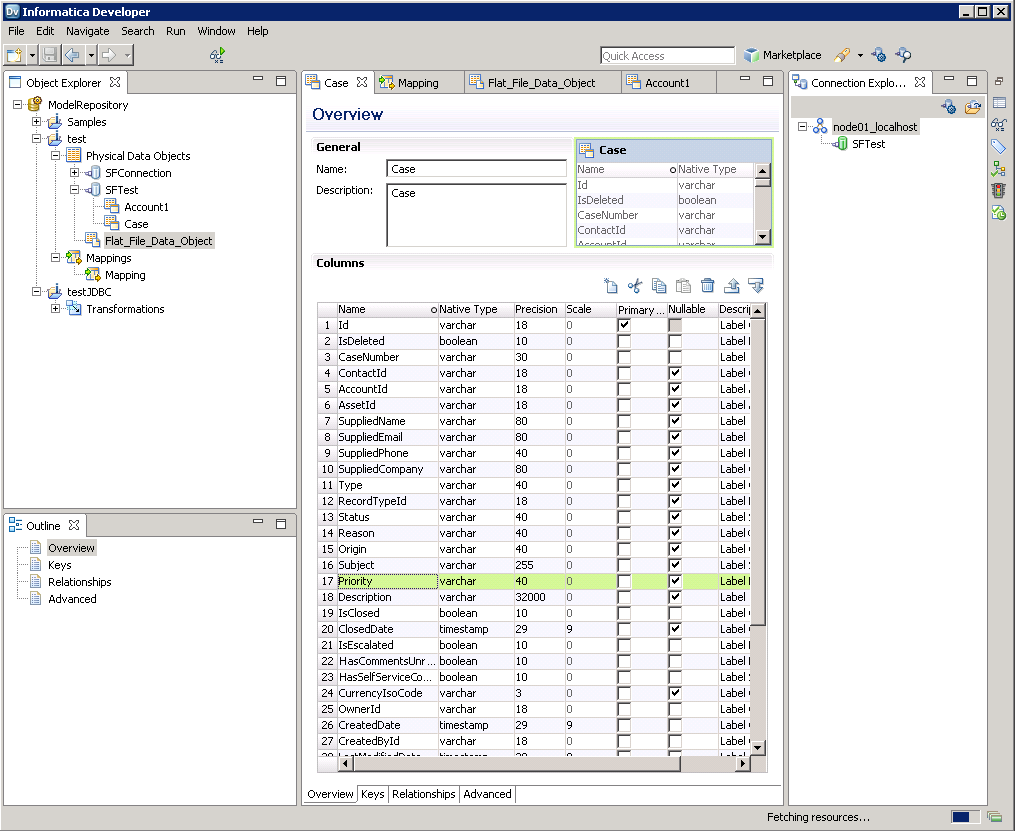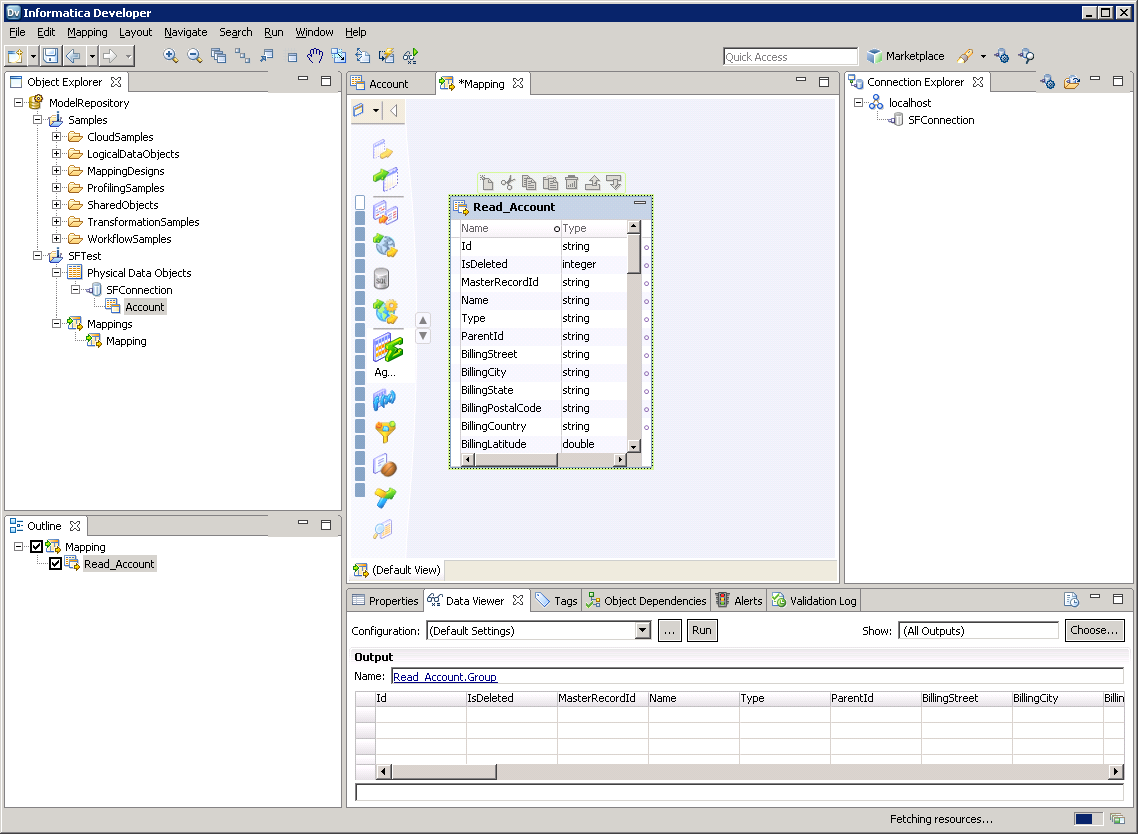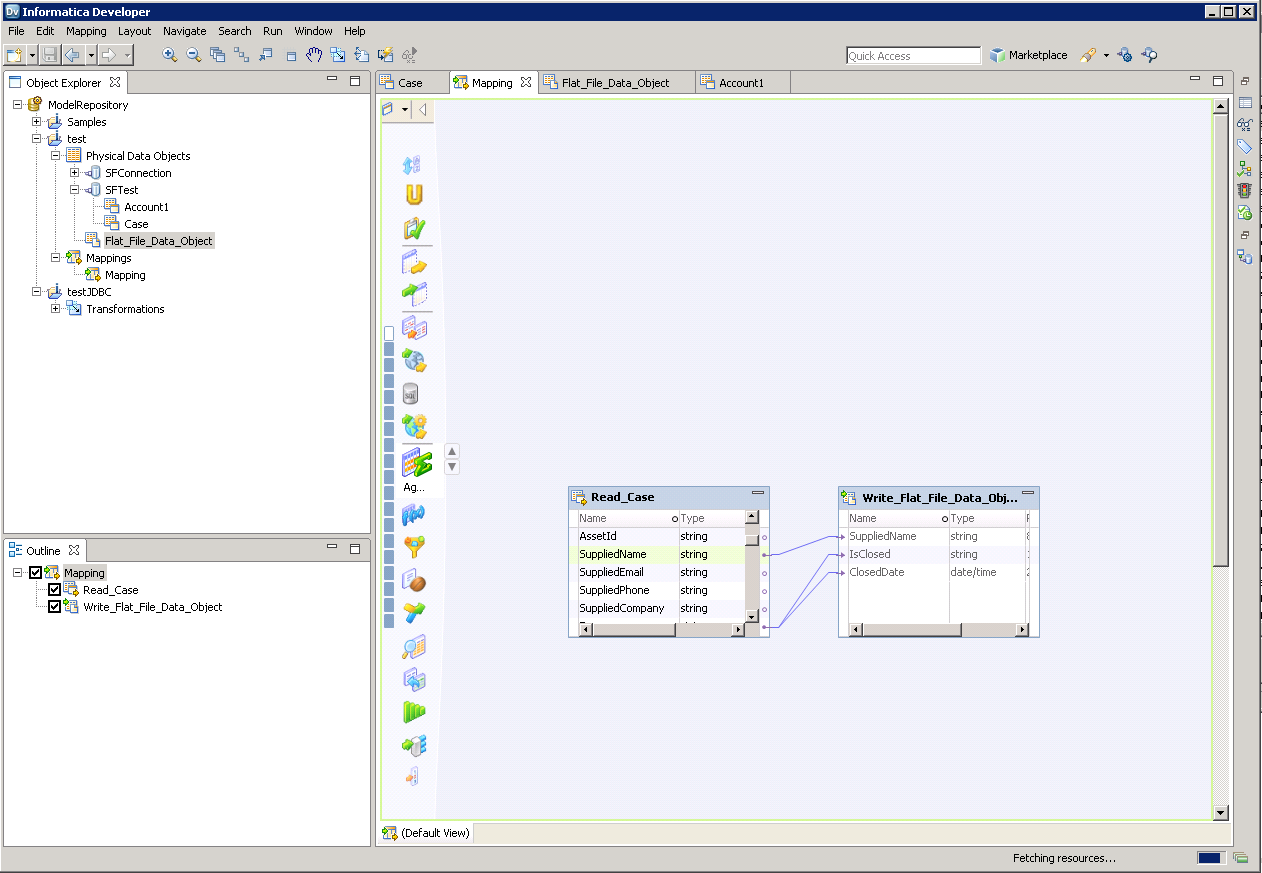Discover how a bimodal integration strategy can address the major data management challenges facing your organization today.
Get the Report →Create Informatica Mappings From/To an ODBC Data Source for SAP Ariba Procurement
Create an ODBC connection to SAP Ariba Procurement in Informatica and browse and transfer SAP Ariba Procurement data.
Informatica provides a powerful, elegant means of transporting and transforming your data. By utilizing the CData ODBC Driver for SAP Ariba Procurement, you are gaining access to a driver based on industry-proven standards that integrates seamlessly with Informatica's powerful data transportation and manipulation features. This tutorial shows how to transfer and browse SAP Ariba Procurement data in Informatica PowerCenter.
Connect to SAP Ariba Procurement as an ODBC Data Source
Information for connecting to SAP Ariba Procurement follows, along with different instructions for configuring a DSN in Windows and Linux environments.
In order to connect with SAP Ariba Procurement, set the following:
- ANID: Your Ariba Network ID.
- ANID: Specify which API you would like the provider to retrieve SAP Ariba data from. Select the Buyer or Supplier API based on your business role (possible values are PurchaseOrdersBuyerAPIV1 or PurchaseOrdersSupplierAPIV1).
- Environment: Indicate whether you are connecting to a test or production environment (possible values are TEST or PRODUCTION).
Authenticating with OAuth
After setting connection properties, you need to configure OAuth connectivity to authenticate.
- Set AuthScheme to OAuthClient.
- Register an application with the service to obtain the APIKey, OAuthClientId and OAuthClientSecret.
For more information on creating an OAuth application, refer to the Help documentation.
Automatic OAuth
After setting the following, you are ready to connect:
-
APIKey: The Application key in your app settings.
OAuthClientId: The OAuth Client Id in your app settings.
OAuthClientSecret: The OAuth Secret in your app settings.
When you connect, the provider automatically completes the OAuth process:
- The provider obtains an access token from SAP Ariba and uses it to request data.
- The provider refreshes the access token automatically when it expires.
- The OAuth values are saved in memory relative to the location specified in OAuthSettingsLocation.
Windows
If you have not already, first specify connection properties in an ODBC DSN (data source name). This is the last step of the driver installation. You can use the Microsoft ODBC Data Source Administrator to create and configure ODBC DSNs.
Linux
If you are installing the CData ODBC Driver for SAP Ariba Procurement in a Linux environment, the driver installation predefines a system DSN. You can modify the DSN by editing the system data sources file (/etc/odbc.ini) and defining the required connection properties.
/etc/odbc.ini
[CData SAPAribaProcurement Source]
Driver = CData ODBC Driver for SAP Ariba Procurement
Description = My Description
ANID = AN02000000280
API = PurchaseOrdersBuyerAPI-V1
APIKey = wWVLn7WTAXrIRMAzZ6VnuEj7Ekot5jnU
AuthScheme = OAuthClient
For specific information on using these configuration files, please refer to the help documentation (installed and found online).
Create a Linked Table to Orders Data
Follow the steps below to create a linked table, which enables you to access live Orders data.
Create the ODBC Connection
Follow the steps below to connect to SAP Ariba Procurement in Informatica PowerCenter:
- In the Informatica Developer tool connect to your repository and create a project.
- In the Connection Explorer pane, right-click and click Create a Connection.
- In the New Database Connection wizard that is displayed, enter a name and Id for the connection and in the Type menu select ODBC.
- In the Connection String property, enter the DSN.
NOTE: If you are working in a Linux operating system, set the Driver Manager for Linux property to unixODBC 2.3.x.
Create the SAP Ariba Procurement Data Object
After you have created an ODBC connection to SAP Ariba Procurement, you can now access SAP Ariba Procurement entities in Informatica. Follow the steps below to add Orders entities to your project.
- In the Object Explorer, right-click your project and then click New -> Data Object.
- In the wizard that is displayed, select the Relational Data Object option.
- Click the Browse button next to the Connection box and select the ODBC connection you created in the previous step.
- Select the option to create a data object from an existing resource and click the Browse button next to the Resource box.
- In the dialog that is displayed, clear the Show Default Schema Only option and expand the node for the ODBC connection. Select the entity that you want.
![The driver models SAP Ariba Procurement entities as relational tables. (Salesforce is shown.)]()
You can now browse the table in the Data Viewer: Right-click the node for the table and then click Open. On the Data Viewer view, click Run.

Create the Mapping
Follow the steps below to add the SAP Ariba Procurement source to a mapping:
- In the Object Explorer, right-click your project and then click New -> Mapping.
- Expand the node for the SAP Ariba Procurement connection and then drag the data object for the table onto the editor.
- In the dialog that appears, select the Read option.

Follow the steps below to map SAP Ariba Procurement columns to a flat file:
- In the Object Explorer, right-click your project and then click New -> Data Object.
- Select Flat File Data Object -> Create as Empty -> Fixed Width.
- In the properties for the SAP Ariba Procurement object, select the rows you want, right-click, and then click copy. Paste the rows into the flat file properties.
- Drag the flat file data object onto the mapping. In the dialog that appears, select the Write option.
- Click and drag to connect columns.
To transfer SAP Ariba Procurement data, right-click in the workspace and then click Run Mapping.








